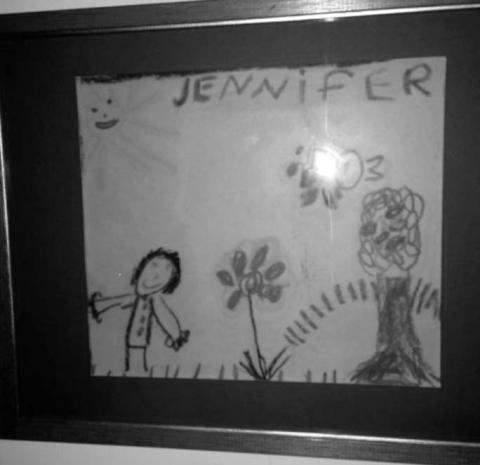
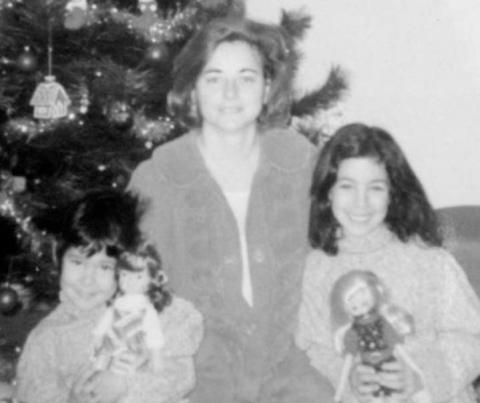
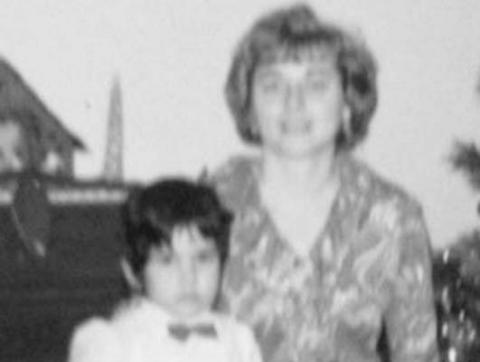
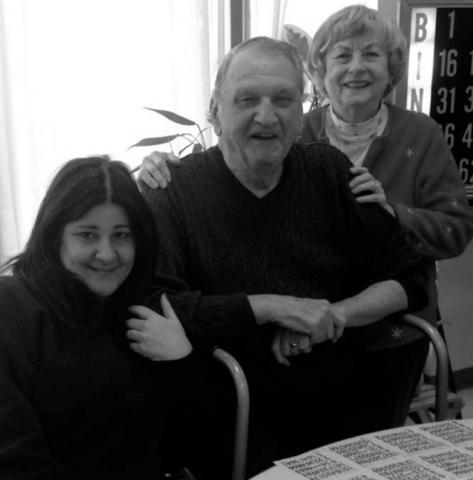
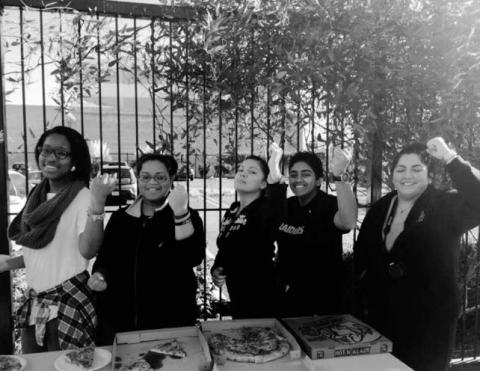
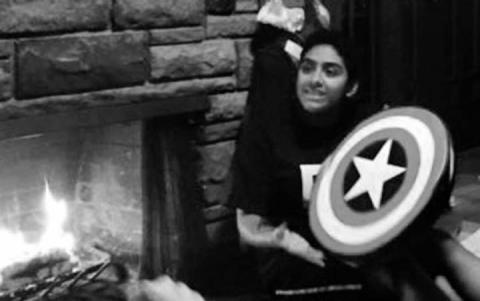
Growing up in New York, Jennifer Valko had what she describes as a privileged childhood with no dysfunction, in spite of having been a warden of the state’s Child Protective Services (CPS) for the first few years of her life. She was adopted from was then the New York Foundling Hospital – a renowned charitable institution in Greenwich Village – by George and Mary Valko when she was four years old. The Foundling – as it is known – had been Jennifer’s home since birth. It takes pride in its more than 144 years of service to pregnant women, abandoned children, and vulnerable families. The Valkos already had one adopted daughter – Marianne – who was four years older than Jennifer.
“I had the quintessential childhood with trips to the city every weekend, dancing and singing lessons, vacations every year, and a large extended family that always did things together,” Jennifer gushed about growing up in a Christian home in Hastings on Hudson just outside of the Bronx borough. “My parents were like the Cleavers,” Jennifer smiled, then hesitated, “but the truth of the matter is that growing up I always felt that I was not like them. I had a huge identity crisis because I didn’t look or act like them.”
Jennifer described herself as having been a rebellious child with ADD which could likely have been the result of her biological parents’ drug use. Even though she has no memory of the four years she spent in CPS, she admits that growing up she never appreciated her “perfect” life for what it was because she suffered from identity issues and a desire to find her real parents. This was very different from how her older sister and a couple of cousins who had also been adopted felt; none of them cared to know anything about their biological parents.
Jennifer’s childhood rebellion transitioned nicely into adulthood rebellion. Even though she did well in school and always easily found respectable employment, she always lived a dual life on evenings and weekends. She describes herself as a party girl who “majored in beer” during her brief enrollment at Marywood College in Pennsylvania.
“I could not wait to get out of my house after I graduated from school,” Jennifer said. Her parents were very strict, which motivated her to go away to college. “My plan was to work on Wall Street and make a million dollars by the time I was 30.”
Jennifer left college, found a studio apartment in the Bronx, and landed a Wall Street job right away. She worked in the financial industry as a sales assistant to stock brokers manning the trading desk for bonds. She put in long hours Monday through Friday and was a regular at the 4 PM after work happy hour. On weekends, Jennifer preferred hanging out with musicians in the West Village wearing grunge clothes and combat boots. That environment easily set the stage for her alcoholism. She focused on her career and having fun. “Like most alcoholics, I functioned very well,” she said.
Jennifer met her husband, Peter, when she was 19 and married him when she was 21. Peter was three years older than she was and a union carpenter. He too had been adopted but his experience was very different from hers. Peter was adopted as a baby by a loving Catholic family and he had no desire to ever find his biological family. Then, after almost nine years of being married to what she refers to as a “total homebody,” Jennifer’s alcoholism got the best of her marriage and the couple decided to divorce. “By then I had a very successful career in the mortgage industry and a very busy social life but I just wasn’t happy,” Jennifer said, “my husband was too boring for me.” Jennifer knew that the “split second” she separated from her husband the first thing she would do is look for her biological parents.
“I always wanted to know where I came from,” Jennifer said. “I created illusions that my real parents were these really smart, really strong college activists protesting in Washington. I dreamt that they were married and had other children and that the only reason why they had given me up for adoption is because they were young when they had me and not ready to raise a child.”
Unfortunately, her fantasies could not be farther from the truth. After years of wondering and a series of life-changing events, Jennifer’s desire to find her biological parents finally intensified to the point where she was ready to take action. She was 29 years old, going through a divorce, and dealing with a longstanding alcohol addiction when she began the tedious process of attempting to locate her parents through hospital and public records.
“This is something I always wanted to do, and I always knew I would do,” Jennifer said. “I just didn’t want to hurt my adoptive parents – that always stopped me.” Peter had always discouraged her from looking for her parents. “A lot of the reasons why I didn’t look for my family sooner were about everybody else,” Jennifer added. But finally, the search was on.
Reuniting with Her Family
With the assistance of Adoption Liberation Movement Association (ALMA), the help of connections she had cultivated at work, and an incredible amount of great fortune, within two weeks of starting the laborious investigation, Jennifer discovered who her parents were – Vincent Ramirez and Maureen McLaughlin – and enough information to locate one of her mother’s two brothers, Terrence.
Jennifer wasted no time calling his house, even though she had been warned by adoption records keepers that her birth was a complete secret from both families and that she should proceed very carefully. The phone was answered by Terrence’s wife, Jackie. Taking a wild chance, Jennifer fabricated a story pretending to be the daughter of an old friend of Terrence’s sister Maureen and asking for her contact information. That is when Jackie informed her that just three months prior, Maureen had died of lung cancer.
Succumbing to the realization that there was no point in keeping her identify secret any longer now that her mother was dead, Jennifer admitted to and apologized for the lie and introduced herself as Maureen’s daughter. That was May 17, 1997, a date Jennifer will never forget. Within a matter of minutes, not only did she learn that her mother had recently died, and that her father – though longtime divorced from her mother – was still alive, and that she had two brothers!
“I immediately assumed that they were younger than me,” Jennifer said. “I was completely shocked when my aunt told me that my brothers were both older than I was. Right away I couldn’t understand why my parents had kept them and not me.”
She quickly got in touch with one of her brothers, Craig who lived in Wurtsboro, and that same night he and his fiancée went to meet Jennifer. They talked until three in the morning. A few days later, Jackie gave Jennifer a picture of Maureen that was taken at her and Terrence’s wedding in October of 1967. They all agreed that Maureen had to have been pregnant with Jennifer at that time since Jennifer was born the following February. Slowly, the pieces of her biological family’s story began coming together. Soon after, she met her other brother, James. Later that summer, at Craig’s wedding, Jennifer was able to meet other biological relatives, including her 78 year old maternal grandmother, Olga.
“That was really intense,” Jennifer said. “I am the spitting image of my mother, who had just died a few months earlier and who my grandmother had lived with for 30 years, so when she saw me for the first time – without ever knowing that I even existed – yeah, it was really intense.”
Jennifer’s story is unique in many ways. After meticulous research and unwavering persistence, she learned certain details about her biological family that are inconsistent with typical families who abandon their children to foster care. Unlike most foster children of the late 1960s and early 1970s, Jennifer discovered that her parents had actually been married, but separated at the time of her birth. Her parents, who were both 23 when she was born, had been together since they were 13 years old. Like many foster children of the era, her biological parents had been free spirits with histories of drug use and unstable lives. She learned that her two older brothers had also been raised in and out of the foster care system as a result of their parents’ instability.
As the story goes, Jennifer’s parents were married and raising their two sons in Manhattan when their perilous lifestyle got the best of them. They separated and agreed to place both boys in foster care. Jennifer’s mom – who never worked and was permanently disabled due to mental health issues – moved into a Washington Heights tenement with her own mother where she lived the rest of her life. Jennifer’s dad was a carpenter by trade but devoted most of his life chasing one get-rich-quick-scheme after another. He disappeared for several years and then resurfaced one day with a new wife, Carol, and her two sons. The four boys had all been regulars in the foster care system for most of their childhood. One fateful night, on a chance encounter, Jennifer’s parents hooked up again in a clandestine rendezvous. Jennifer is the result of that one night stand, but because her father was married to Carol at the time, her pregnancy and birth were kept completely secret from everyone. Jennifer’s father and Carol lived in a commune in Topanga Canyon, California most of the time that Jennifer was at the Foundling.
“I believe my father convinced my mother to give me up for adoption because he didn’t want Carol to find out that he cheated on her,” Jennifer admits.
When Jennifer lived at The Foundling, she was ineligible for adoption because her father – who was identified on her birth certificate – could not be located to sign off on her adoption, even though her mother had relinquished her maternal rights upon giving birth. However, when her father eventually returned to CPS to claim his sons, he willingly waved his paternal rights to Jennifer, who was quickly adopted.
“My father knew about me all along, but he wasn’t around to sign off on me when I was born like my mother did,” Jennifer laments, “if he had, I would have been adopted as a newborn baby.”
A two-year roller coaster of emotions consumed Jennifer after meeting her biological family. She and her brothers all experienced feelings of jealousy toward each other, which only drove her deeper into her alcohol addiction. She resented them because of the closeness and history they had with each other because she had no history with them. They resented her because of the solid childhood she had with her adoptive parents. This perpetuated her drinking habit and drove her deeper into her sickness. She knew she needed to get sober but just couldn’t make it happen.
In January of 2006, Jennifer was frustrated with the demise of yet another long term relationship and made the bold decision to pursue a fresh start in California. Still struggling with age-old issues of abandonment and identity, and coping with repetitive disappointments of attempted and failed efforts to get sober, Jennifer eventually managed to settle into a life of semi-routine, trying to make sense of her family’s tragic history.
Today, Jennifer has no contact with her father who she says has been a “real disappointment.” Her dad has been in and out of jail over the years in spite of being really smart with lots of great business ideas. “He just makes poor choices,” Jennifer said. “He’s a con-artist who can sell anything to anyone but then he cheats them or falsifies records or writes bogus checks.” Her stepbrother, Aaron, was a medic in Desert Storm who now suffers from PTSD and is confined to his Monroe, New York apartment due to extreme obesity, medicinal drug dependency, and required oxygenation restrictions. Aaron’s younger brother, Scott, died from lung cancer when he was 24. Their mother, Carol had also succumbed to the same disease when was 42. Jennifer learned that she once also had a half-sister from her mother who died when she was 12 from a hole in heart. On a more positive note, Jennifer does enjoy frequent and regular contact with both of her brothers who are both professional photojournalists. James, the oldest is a sports photographer in Georgia and Craig still lives with his wife and daughter in New York. Craig’s work has been featured in newspapers, books, art galleries, and museums. “I have a niece!” Jennifer smiled when she said this.
After two years of trying to get sober, Jennifer finally succeeded and has been sober since August 13, 2008. It was around that time that Jennifer read an online article about emancipated foster youth. She always knew she wanted to do something for and with foster youth, but that article inspired and set the stage for her becoming a foster parent and more…
Fostering a Change
In August of 2013, Jennifer Valko was going through the rigorous process of becoming a single foster parent for the County of Los Angeles. She was five years sober and had decided to become a foster parent as a way of coming to terms with her own experiences as a foster child. Jennifer was busy taking the required classes, completing lots of paperwork, undergoing extensive background checks, and enduring several home inspections.
“This was something I always knew I wanted to do,” Jennifer said. “For the first time in my life I had stability; I had a good job, a nice place to live, and I was sober. I was ready to become a foster mother.”
Then, in the midst of the qualifying process, life happened. Jennifer was unexpectedly laid off from her job as a mortgage underwriter at a major bank where she had worked for several years. That surprising stroke of fate forced her to reassess her decision to become a foster parent, but she did not waver and instead made an even bigger decision. The sudden time off coupled with a generous severance package not only solidified her decision to continue with her foster parenting goals, but they inspired her to think bigger. Jennifer devoted her time and resources into identifying specific needs within the foster care system. She took her newly acquired foster parenting legitimacy to the next level and after more than six months of research, she discovered a critical problem.
“Lots of foster youth are released from the program when they turn 18 or graduate from high school with nothing,” Jennifer stated, “absolutely nothing.” She explained that many youth usually have no job, no money, no driver’s license, and only the clothes on their backs when they emancipate from the foster care system. This forces them to find less than favorable means of survival, sometimes as drastic as prostitution. Jennifer conducted focus groups and decided that the best way she could help this youth population achieve successful independence is by establishing a program that would help them adapt and adjust to the real world. That program manifested itself into Fostering a Change, an organization founded in October of 2013 specifically to support foster youth transitioning out of foster care.
Lotus House
Shortly after Fostering a Change became official with such things as a valid 501c3 nonprofit status, a mission statement, and a Board of Directors, the idea to secure a permanent place for these female foster youth to live in seemed like the next logical step. Jennifer set out to locate such a place but encountered a tremendous amount of difficulty finding one.
“No one wanted to rent a house to us,” Jennifer said, “it was very frustrating because once the owners found out the house would be lived in by ex-foster youth, they backed off.”
After an exhaustive search of more than 40 houses throughout Los Angeles County, Jennifer finally found one in the East Anaheim neighborhood of Long Beach with an owner willing to lease it to her for the purpose of housing transitioning foster youth. She found the house on June 1st and got the keys for it on August 1st.
After two months of renovations, and less than one year after Fostering a Change became a reality, the house officially became a viable home for young women between the ages of 18-24. For several months, Jennifer and her village of supporters looked for and placed young women in the program, while slowly turning the house into a home. Each girl had to agree to the terms of the house prior to moving in. These terms include going to college and working, or actively looking for work, as well as being responsible for their share of household chores.
On May 9, 2015 Lotus House – as the home is named – hosted a grand opening celebration in recognition of Foster Care Awareness Month, complete with a formal ribbon cutting ceremony that was attended by prominent members of the community. Congratulatory speeches were given by California Assemblymember Patrick O’Donnell, Mayor of Long Beach Dr. Robert Garcia, and Councilmember Daryl Supernaw in whose district the house is located. Touching remarks were offered by Herlinda Chico who serves as President of the Fostering a Change Board of Directors, Michael Lynn who grew up in the house when his parents owned it, as well Jennifer herself. However, the real keynote speakers were two of the residents.
Unable to hold back tears, the girls who spoke shared emotional testimonies about the years they spent in foster care and how grateful they are to Jennifer and the organization for giving them the opportunity to live in Lotus House.
One young lady, 21 year old Jaci, described the joy she felt when she received the keys to Lotus House for the first time. “I had never had keys to any house before,” Jaci said, visibly moved. “Holding those keys in my hand meant to so much to me because I finally had my own home.”
The girls have complete access to the four bedrooms, four bath 2,600 square foot corner house that can accommodate seven residents. They are all required to follow specific house rules. As expected, several young women living together can be stressful, but they are learning to get along.
“We all have such different personalities,” said one of the original residents, 19 year old Victoria, during a group interview during which topics such as grocery shopping and having guests over were discussed. “We have to learn to communicate and compromise.”
Her statements were met with general agreement and similar reaffirming remarks from the other residents who did exactly what typical families do while sitting around the dining room table talking; they interrupted each other, corrected each other, talked over each other, and even laughed at each other.
Another original resident, 21 year old Andrea, shared that even though she does have a lot of responsibility living in Lotus House, she likes having the independence living there provides. “I have more freedom now than I did in the 12 years I spent in foster care, and I wouldn’t change a thing.”
The girls embarked upon another lively conversation about their experiences in a variety of foster homes, and through the banter, one firm voice could be heard. Renashia, also 21 years old, said, “I feel safe here.”
Indeed, Fostering a Change has successfully created a place where girls could feel safe through acceptance and love. Plans are currently underway to establish a similar home to support boys transitioning out of foster care. For more information and/or to get involved, visit www.fosteringachange.org.
“These girls are family to each other,” she said smiling throughout the noisy exchange of distinct voices. “We are all family to each other.”

 Owner/Editor - Chris Chmielewski
Owner/Editor - Chris Chmielewski